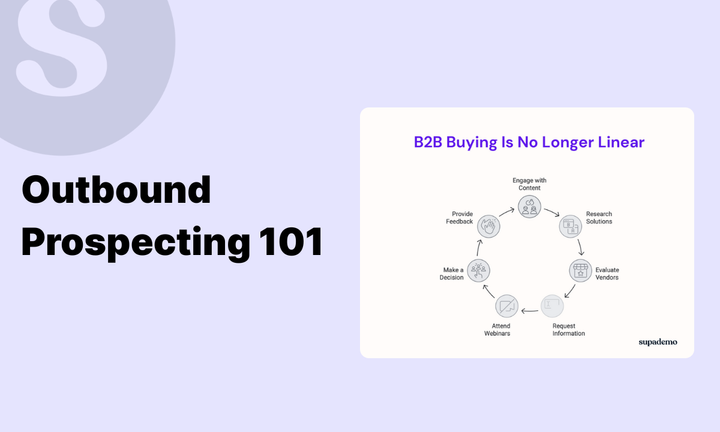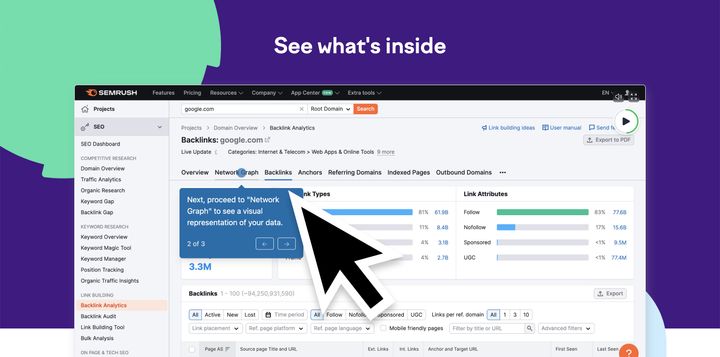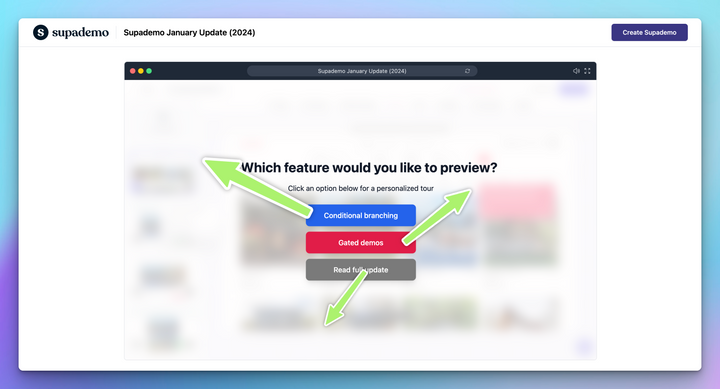If you’ve been in sales long enough, you’ve probably heard it: “Outbound prospecting is dead.”
Well......it’s not.
It’s just evolved.
The truth is, buyers have changed. They filter noise, ignore generic pitches, and respond only when something feels relevant.

Today, effective outbound is built on context, data, and timing. It’s about understanding who you’re reaching out to and why, then showing real value from the first touch.
This guide breaks down what outbound prospecting really means today, how to build a strategy that converts, and which channels actually deliver results in 2026.
What is outbound prospecting?
Outbound prospecting is the process of actively reaching out to potential customers who haven’t yet shown interest in your product or service.
It involves researching, identifying, and contacting prospects through channels like email, LinkedIn, or calls to generate new sales opportunities and start meaningful conversations.
Inbound vs outbound prospecting
The core difference lies in who initiates contact. Inbound prospecting attracts leads who come to you through content or marketing, while outbound prospecting requires you to reach out first.
| Aspect | Inbound Prospecting | Outbound Prospecting |
|---|---|---|
| Who Initiates | Prospect reaches out | Sales team reaches out |
| Lead Type | Warm, interested | Cold, unaware |
| Channels | Blogs, SEO, webinars, social media | Email, cold calls, LinkedIn |
| Goal | Build long-term relationships | Generate quick opportunities |
| Sales Cycle | Longer, more organic | Shorter, requires persistence |
Why outbound still drives growth in 2026?
Outbound prospecting has evolved over the years. Here’s why it continues to drive predictable growth for sales teams in 2026:
- Control over pipeline: Inbound depends on when leads come in. Outbound gives you control. You choose which accounts to target, when to engage, and how to position your message.
- Faster demand generation: When inbound slows down or budgets tighten, outbound helps teams create new opportunities instead of waiting for them. It keeps the pipeline healthy even in slower markets.
- Data-driven targeting: Modern outbound is no longer about sending 1,000 cold emails. AI tools and intent data help you identify which accounts are actively researching your solution, what topics they care about, and when they are most likely to respond.
- Personalization at scale: Automation supports, not replaces, the human touch. Reps can personalize based on role, trigger, or recent activity, making outreach relevant without losing efficiency.
- Consistency and predictability: Outbound adds a steady layer of pipeline you can forecast. It complements inbound and ensures teams are not at the mercy of content performance or ad budgets.
- Early relationship building: A thoughtful outbound message often introduces your brand before a buyer starts researching alternatives. Done right, it positions you as a trusted advisor, not just another vendor.
In short, outbound works because it is proactive, data-backed, and human. It helps sales teams stay in control of their pipeline and create conversations that turn into customers.
The 5-Stage outbound prospecting process
Stage 1: Identifying potential customers
The first step is defining who you actually want to reach.
Start by building a clear Ideal Customer Profile (ICP) that includes company size, industry, location, tech stack, and buying triggers. Use existing customer data to find patterns in deal size, retention, or time to close.
Once the ICP is defined, align it with your marketing and customer success teams to confirm the right segments. Then, use tools like LinkedIn Sales Navigator, Apollo, or Clay to source accounts that match your target profile. Strong outbound starts with precision, not volume.
Stage 2: Enriching lead data
After identifying target accounts, focus on finding the right people within them. Map decision-makers, influencers, and end users for each account. A typical B2B deal involves multiple stakeholders, so enriching your database is key.
Use enrichment tools such as ZoomInfo, Clearbit, or Cognism to verify email addresses, roles, and contact data.
Layer buying signals from platforms like 6sense or Bombora to prioritize who is actively researching your category. Segment your lists by persona and engagement potential to prepare for targeted outreach.
Stage 3: Contacting and qualifying leads
Now comes the outreach. Combine channels like email, LinkedIn, and phone to create a sequence that feels personalized and intentional. Each touchpoint should add value, not noise.
Start with a relevant hook that references something specific to the prospect — a recent post, company update, or problem they might be solving. Ask open-ended questions that lead to conversations, not pitches.
Qualify leads using frameworks like BANT (Budget, Authority, Need, Timeline) or MEDDIC to ensure they fit your ICP and are worth pursuing. The goal is not to push for a meeting at all costs but to confirm mutual fit before investing more time.
Stage 4: Showing your solution
Once interest is established, demonstrate how your solution solves their exact problem. Keep the focus on outcomes. For example, show how your product reduces manual work or increases revenue rather than listing features.
Use customer stories, screenshots, or short interactive demo videos to make your message tangible.
In 2026, prospects expect to see value, not read about it. Visual and interactive presentations often outperform decks or static PDFs. Keep it short, relevant, and tied to the pain points uncovered during qualification
Stage 5: Closing the deal
The closing stage is about alignment and clarity, not pressure. Summarize key benefits, ROI, and what success will look like for the buyer. Confirm all decision-makers are looped in and address objections early.
Maintain consistent and focused communication centered on value. Use follow-up messages to reinforce what was discussed and clarify next steps. Before sending a proposal, confirm the budget, timeline, and procurement process to avoid surprises.
Best practices for outbound prospecting
Executing outbound is one thing. Scaling it consistently is another. The best sales and enablement teams treat outbound as a structured system, not a one-off campaign. Here’s how to make your outreach smarter, repeatable, and measurable.
Build a repeatable outbound system
Document your outreach process from research to follow-up. Create shared templates, demo call scripts, and sequence playbooks so every rep follows the same structure while leaving room for personalization.
A repeatable process reduces guesswork, shortens ramp-up time, and helps new hires succeed faster.
Personalize with value
Your message should show that you understand the prospect and offer something useful right away. Reference a specific trigger, such as a product launch, hiring trend, or role change, and tie it to an actionable insight or idea that matters to them.
An effective way to do this is by sharing a short interactive demo that prospects can click through to see exactly how your product addresses their challenge. Interactive demos help reduce friction early in the funnel and can increase deal velocity by up to 33%.
Here's an example of an interactive demo of Fin AI by Intercom created using Supademo:
There are so many ways to personalize your sales process - during cold outbound and after.
Here's an example of a prospect turned customer that showed his appreciation to Fredo Tan, Head of Growth at Supademo, for personalizing the dmeo experience for him:
Use a multichannel approach
Start by pairing two high-performing channels, like LinkedIn and email, and use insights from one to personalize the other.
For example, reference a post a prospect engaged with before sending your email. Small cross-channel touches create familiarity and trust faster than volume ever could.
Align with marketing and success teams
Outbound becomes far more effective when it’s aligned across departments. Marketing insights help refine ICPs and messaging, while customer success data reveals what problems existing customers actually solved.
When sales, marketing, and success share data, outbound messaging feels more relevant and credible.
Follow-up strategically
Most B2B sales close after three to five follow-ups, yet many reps stop too early.
Follow up with intent, not repetition. Add a new piece of context, reference a recent update, or share a useful resource that ties back to the prospect’s pain point. Keep your tone conversational, your message short, and your timing consistent.
Balance automation and human touch
Automation helps scale outreach, but it should never replace genuine connection. Build this balance into your outreach strategy: use automation for list building, lead enrichment, CRM updates, initial lead qualification, scoring, and demo automation.
Then reserve your time and energy for high-value conversations, complex negotiations, and relationship-building moments.
Set clear goals and measure continuously
Define what success looks like, whether it is reply rates, meetings booked, or opportunities created. Review your metrics regularly to spot what is working and what needs adjustment. Continuous measurement keeps outbound efforts aligned with revenue goals.
A great example of this comes from Gong’s Former VP of Sales, Justin Geller, who built an outbound culture from scratch by focusing on one key leading indicator and embedding it into every meeting, 1:1, and forecast discussion.
Train and coach your reps
Review call recordings, email replies, and performance metrics to identify improvement areas.
Use role-plays or peer reviews to sharpen discovery and personalization skills. Continuous coaching turns individual reps into a coordinated, high-performing team.
Top outbound prospecting channels and how to use them in 2026
The best sales teams don’t rely on one channel. They build a rhythm across multiple platforms where their buyers actually spend time. Each channel plays a specific role in creating visibility and driving engagement.
LinkedIn and social selling
LinkedIn remains the most powerful B2B prospecting platform.
With 75% of B2B buyers using social media to guide purchasing decisions, social presence is not optional anymore.
Focus on building a credible personal brand. Prospects often check your profile, read your posts, and scan your network before replying. Share insights, comment on industry updates, and engage genuinely before reaching out.
When you finally send a message, it feels like a natural continuation of an existing conversation - not a cold pitch.
Check out this video by Leon Petrou, where he covers how to generate hyper-personalized LinkedIn connection requests, enhancing acceptance rates, and including an automated interactive product demo link.
Cold emailing
Cold email remains one of the most reliable ways to reach decision-makers.
Use these insights to make every email count. Start with a clear, relevant subject line that earns attention. Personalize the opening around a recent company update, product launch, or role change.
Keep the message focused on one pain point and end with a simple, low-friction call to action. When your email feels personal and valuable, it stands out in even the busiest inbox.
We hear a lot of people claiming cold emailing doesn't work anymore.
Here's what Joseph Lee, CEO of Supademo, recently shared about cold email:
The "Predictable Revenue" playbook is dead. AI flooded inboxes with fake personalization, killing response rates.
His new approach: create value first. Build custom demos, offer free tools—no pitch upfront.
Result? Higher responses and genuine conversations. Outbound still works, but requires real human connection over mass automation.
Cold calling with data intelligence
Despite predictions of its demise, cold calling with proper preparation delivers results.
Modern cold calling bears little resemblance to spray-and-pray dialing. Success requires data intelligence and preparation. Before picking up the phone, spend 5-10 minutes reviewing the prospect's LinkedIn profile, recent company announcements, tech stack, and any mutual connections. This research enables you to lead with relevant insights rather than generic pitches.
Use verified contact databases to ensure you're reaching the right person with accurate direct dials and mobile numbers.
SMS and WhatsApp follow-ups
Mobile messaging has become a powerful follow-up channel in B2B sales. With open rates exceeding 90%, SMS and WhatsApp help you cut through inbox clutter and reach prospects instantly.
But use these channels only after initial contact through email, LinkedIn, or a call. They work best for short follow-ups, meeting reminders, or time-sensitive updates.
Keep messages concise, professional, and focused on one clear next step. Limit usage to one or two touchpoints within your multichannel sequence to keep outreach personal and respectful.
Important caveat: This approach (or any cold outreach approach for that matter) isn't universal—you need to deeply understand your ICP first.
What works varies dramatically by industry, geography, and buyer expectations. Cold calling someone in SF to sell a presentation tool might fail, while the same approach could work in the UAE.
Test what resonates with your specific audience before committing to any playbook.
Here's what Hiba Fathima, Growth and Product marketer at Supademo, recently shared about running SaaS marketing in the MENA region:
Video prospecting
Videos that perform best are 30-60 seconds long, address the prospect by name, and reference something specific about their company or role. Use video strategically for high-value accounts, re-engagement sequences, or when explaining complex concepts that benefit from visual demonstration.
Tools like Loom or Supademo make video prospecting effortless. Supademo goes a step further by letting you record personalized videos, track engagement, and instantly convert them into interactive demos that prospects can explore.
Here’s an example of how you can create engaging videos for outbound prospecting:
Retargeting and CRM-triggered outreach
Track actions like website visits, demo views, or email opens to trigger timely and relevant follow-ups.
Use your CRM to track these signals and create timely outreach sequences. For example, set alerts for when a contact revisits your pricing page or downloads a case study, then follow up within 24 hours while the intent is still fresh.
Webinars and tradeshows
Webinars remain one of the most effective lead-generation channels, with 73% of B2B marketers ranking them highest for driving qualified leads. They help you educate prospects, showcase expertise, and demonstrate your product in real time.
Keep sessions under 30 minutes, focus on value over promotion, and end with a clear takeaway or live demo to encourage follow-up engagement.
Tradeshows create high-intent, face-to-face connections that build trust and accelerate sales cycles.
Capture attendee details in your CRM and follow up within 24–48 hours while interest is fresh. Segment outreach by engagement level to deliver relevant, timely follow-ups that convert faster.
Conference floors are noisy and competitive — you need a way to quickly cut through. Supademo enables teams to run short, polished walkthroughs that highlight product “wow” moments in under three minutes.
Attendees can explore on booth screens or iPads without risking a broken live environment. After the event, built-in analytics show which demos were most engaging, giving your team the data to prioritize warm leads and convert booth traffic into pipeline.
What is the future of outbound prospecting
As Sam Altman says, we’re now in an era of software fast fashion, where products evolve quickly, competition is fierce, and attention spans are short.

The only way to stand out is by delivering value upfront, crafting a strong brand narrative, and moving beyond spray-and-pray outreach.
The next phase will be driven by intelligence, not just intensity. 70% of sales reps using AI report improved response rates when technology enables smarter outreach: analyzing buying signals, predicting intent, and triggering personalized messages based on real behavior.
CRM workflows, automated enrichment, and data-led prioritization keep reps focused on high-potential accounts instead of chasing noise
Even as technology advances, the human side will matter more than ever. Relevance, empathy, and clarity will separate strong outreach from forgettable spam.
Great sellers will use AI for insight and automation for scale, but they will win through meaningful connection by understanding when to reach out, what to say, and how to demonstrate value in seconds. 70
Power your outbound prospecting with Supademo
Variables and tokens allow reps to customize demos with a prospect’s name, company, or industry context at scale — creating a sense of relevance without extra effort.
Because every view is trackable, sellers can see who clicked, how long they engaged, and which features resonated most, turning cold outreach into warm conversations.
The fastest way to stand out in outbound is to make your value obvious. Supademo helps sales teams do that through interactive product demos that explain complex ideas in seconds.
Whether you’re prospecting over email, LinkedIn, or video, a Supademo helps you put the show-and-tell approach into practice.
It helps your team book more meetings, reduce back-and-forth, and start every conversation with context. When prospects can experience your product early, outbound turns from outreach to opportunity.
Try Suapdemo today for free and create high-converting interactive demos
FAQs
What are the most effective outbound prospecting channels today?
Email, LinkedIn, and cold calling continue to deliver results. Top-performing teams combine these with interactive demos, short videos, and retargeting signals to create more touchpoints and improve engagement rates.
How can AI improve outbound prospecting?
AI helps sales teams analyze data, detect buying intent, and personalize outreach faster. It automates research and segmentation so that reps can focus on meaningful conversations instead of manual work. The key is to use AI to scale efforts while keeping every interaction human.
How to handle rejection in outbound sales?
Rejection is part of every sales process. The key is to learn from it instead of taking it personally. Review your messaging, timing, and target fit after each no. Often, refining your outreach or offering clearer value can turn future rejections into responses.
Why is outbound still relevant in 2026?
Outbound prospecting remains a core growth strategy because it gives sales teams control over pipeline creation. It helps you target specific accounts, reach decision-makers directly, and build momentum even when inbound demand slows down.
What is an example of an outbound sales activity?
Common outbound activities include sending cold emails, making prospecting calls, connecting on LinkedIn, hosting webinars for targeted accounts, or sharing short product demos to spark new conversations.
Is inbound or outbound sales easier?
Inbound sales often feels easier because leads are already interested. Outbound requires more research and persistence but gives you control over who enters your pipeline. The best sales teams use both to create consistent growth.
Is outbound sales just cold calling?
Cold calling is one form of outbound sales, but it’s only one piece of the process. Modern outbound also includes personalized emails, LinkedIn outreach, video messages, and interactive demos that make outreach more engaging and effective.




